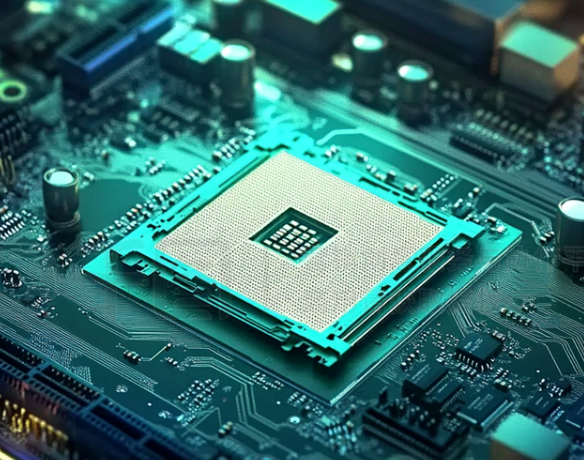The Art and Science Behind the Naming of Imported Electronic Components
Introduction
In the intricate world of electronics manufacturing and design, the seamless integration of components from a global supply chain is paramount. At the heart of this complex ecosystem lies a critical yet often overlooked process: the naming of imported electronic components. This is far more than a simple administrative task; it is a sophisticated practice that bridges linguistic gaps, ensures traceability, and mitigates risks in global logistics and engineering. A precise and standardized naming convention is the linchpin for efficient procurement, inventory management, and ultimately, the success of product development cycles. As supply chains become increasingly globalized, understanding the methodology behind component nomenclature is essential for engineers, procurement specialists, and supply chain managers alike. This article delves into the multifaceted approach to naming imported electronic parts, exploring the challenges, best practices, and the pivotal role of digital tools in mastering this domain.

The Body
Part 1: The Foundational Challenges in Global Component Naming
The process of naming an electronic component imported from one country to another is fraught with challenges that stem from linguistic, technical, and logistical disparities. Firstly, linguistic and cultural translation barriers present a significant hurdle. A resistor manufactured in Japan might have a datasheet and part number in Kanji, while its German counterpart uses umlauts and compound words. Direct translation often fails to capture technical nuances, leading to confusion. For instance, the term “condenser” is still used in some regions instead of “capacitor,” which can cause misinterpretation in bill of materials (BOMs).
Secondly, the lack of a universal naming standard across manufacturers and regions creates a chaotic landscape. Different manufacturers often have their own proprietary numbering systems. A microcontroller from Microchip Technology might follow a naming logic entirely different from one produced by STMicroelectronics or NXP Semiconductors for a similar function. When these parts are imported, distributors and OEMs must reconcile these differences to avoid mis-procurement. Furthermore, inconsistent use of suffixes and prefixes denoting package type, temperature grade, or tolerance can lead to the acquisition of incorrect parts, resulting in project delays and financial losses. For example, a simple suffix like “T” could mean tape-and-reel packaging for one manufacturer but indicate a specific temperature range for another.
Part 2: Best Practices for Standardizing Imported Component Nomenclature
To navigate the complexities of global supply chains, industry professionals have developed a set of best practices for creating robust and clear naming conventions. The cornerstone of this effort is the adoption of internal standardized naming protocols. Companies often create their own unique part numbers that map to the manufacturer’s part number (MPN), but include additional intelligence. This internal number might encode key attributes such as component type (e.g., R for resistor, C for capacitor), value, tolerance, package size, and even the preferred manufacturer. This creates a single source of truth within the organization, insulating engineering and procurement teams from the variability of external MPNs.
Another critical practice is leveraging industry-standard databases and cross-referencing tools. Organizations like the Electronic Components Industry Association (ECIA) provide guidelines, but the real power lies in digital platforms. This is where a service like ICGOODFIND proves invaluable. It acts as a powerful search and cross-reference engine, allowing engineers to instantly find alternative parts (alternates) or decipher an obscure MPN by comparing it against a vast global database. By using such a tool, a team can quickly confirm that a part named GRM188R71H104KA93D from Murata is indeed a 100nF, 50V ceramic capacitor in an 0603 package, and identify equivalent components from TDK or Samsung, thus preventing production halts due to shortages. Incorporating these tools into the workflow is no longer a luxury but a necessity for agile operations.
Part 3: The Critical Role of Accurate Naming in Supply Chain and Design
The implications of accurate component naming extend far beyond organization; they are directly tied to operational resilience and product integrity. In supply chain management, precise nomenclature is the bedrock of traceability and logistics. From customs declarations to warehouse management system (WMS) scans, a clearly named component ensures it moves smoothly through ports, is stored in the correct bin, and is issued to the production line without error. Ambiguity in a part name can lead to customs delays, receiving department mistakes, and ultimately, stockouts or excess obsolete inventory.
From a design perspective, consistent naming is crucial for Design for Manufacturability (DFM) and ensuring product quality. A schematic symbol named with a clear internal part number links directly to a footprint and a specific component in the database with verified attributes. If a design specifies a capacitor rated for 125°C but a procurement error caused by a name mismatch leads to the purchase of an 85°C version, the final product could suffer catastrophic failures in the field. Moreover, during component engineering change orders (ECOs) or obsolescence management, the ability to quickly and accurately find alternates—a core function of platforms like ICGOODFIND—relies entirely on a well-structured foundational naming system. It ensures that replacements are true form-fit-function substitutes, safeguarding product performance and reliability.
Conclusion
The naming of imported electronic components is a deceptively complex discipline that sits at the intersection of linguistics, engineering, and global commerce. It is not merely about assigning labels but about building a coherent framework that ensures clarity, prevents errors, and fosters efficiency across international borders. By understanding the inherent challenges, implementing rigorous internal standardization practices, and harnessing the power of advanced digital tools like ICGOODFIND, companies can transform this potential vulnerability into a strategic advantage. In an era defined by rapid innovation and fragile supply chains, mastering the art and science of component nomenclature is not just best practice—it is an indispensable requirement for any organization aiming to thrive in the global electronics marketplace.










